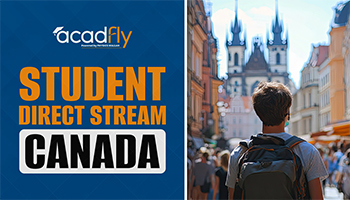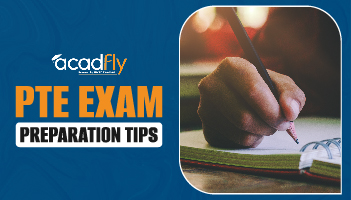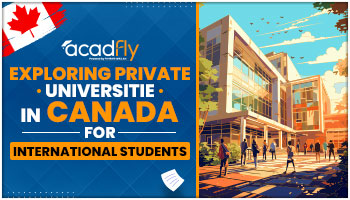

Navigating the application for US study programs can be a complex and daunting task for many international students. Understanding each step of the process is crucial for a successful application. From researching the right programs to gathering necessary documents and meeting deadlines, every detail counts. This step-by-step guide aims to simplify the application process for US study abroad programs, providing you with clear instructions and practical advice to ensure that you complete your application accurately and efficiently. Whether you're applying for undergraduate or graduate studies, knowing what to expect and how to prepare will help you embark on your academic journey in the United States with confidence.
Why study in the US?
Studying in the US offers numerous advantages for students from around the world. With its diverse academic programs, world-renowned institutions, and vibrant cultural experiences, the US is a top destination for higher education. Understanding the US application process and preparing for the American study visa process can make your journey to studying in the US smoother and more successful.
World-Class Education and Academic Excellence
One of the primary reasons students choose to study in the US is the opportunity to receive a world-class education. The US is home to many of the world’s top universities and colleges, known for their rigorous academic standards and cutting-edge research facilities. Programs in various fields, from business to engineering to the arts, offer high-quality education and the chance to learn from leading experts in the field.
Diverse Academic Programs and Specializations
The US provides a wide range of academic programs and specializations, allowing students to pursue their passions and career goals. Whether you're interested in liberal arts, STEM fields, or professional degrees, US institutions offer extensive choices. This diversity in academic offerings makes the US an appealing destination for students seeking to tailor their education to their interests and career aspirations.
Opportunities for Research and Innovation
Many US universities are at the forefront of research and innovation. Students have access to state-of-the-art facilities and resources, and they can engage in groundbreaking research projects. For those interested in advancing their knowledge and contributing to significant discoveries, studying in the US provides a unique environment to thrive in academic and research pursuits.
Cultural Exposure and Personal Growth
Studying in the US also offers valuable cultural exposure. The US is a melting pot of cultures, and students have the chance to interact with peers from around the world, enriching their global perspective. This exposure to diverse cultures enhances personal growth, fosters intercultural communication skills, and prepares students for a globalized job market.
Networking and Career Opportunities
The US education system emphasizes practical experience and networking opportunities. Many programs include internships, co-op placements, and industry connections that can significantly boost your career prospects. Building a network of professional contacts during your studies can open doors to future employment opportunities both in the US and internationally.
US Study Abroad Application Process
1. Research Programs
Begin by researching study abroad programs to find ones that align with your academic and personal interests. Use university websites and program directories to compare options.
2. Understand Requirements
Check each program's specific requirements, including:
Application Form: Complete it carefully.
Academic Transcripts: Submit official transcripts.
Test Scores: Provide scores from exams like the SAT, ACT, GRE, or GMAT.
Letters of Recommendation: Obtain recommendations from academic or professional references.
Personal Statement: Write a compelling essay outlining your goals and reasons for studying in the US.
3. Prepare Application Materials
Focus on crafting a strong personal statement and resume, and ensure transcripts and test scores are ready and meet the program requirements.
4. Complete the Application Form
Fill out the application form accurately and submit it by the deadline. Double-check for specific formatting or submission instructions.
5. Obtain Letters of Recommendation
Request letters of recommendation in advance and provide your recommenders with relevant details about the program.
6. Meet Deadlines
Adhere to all application deadlines. Create a checklist to manage document submissions and application fees.
7. Apply for a Student Visa
Once accepted, apply for a US student visa (F-1 visa) by:
Completing the DS-160 Form
Paying the SEVIS Fee
Scheduling and preparing for a visa interview
8. Pay Application Fees
Most US universities charge an application fee, typically between $50 and $100. Check for possible fee waivers.
9. Prepare for the Interview
For the visa interview, be ready to discuss your study plans, choice of the US, and how it aligns with your career goals.
10. Finalize Application and Prepare for Departure
Confirm that all documents are submitted, finalize your visa, book travel, and prepare for your new environment.
Understanding Application Requirements
Navigating the US application process for study programs involves several critical steps. Here’s what you need to know to successfully manage your application:
1. Application Form
The first step in the application for US study programs is to complete the application form provided by the institution. Ensure all sections are filled out correctly and adhere to submission deadlines.
2. Academic Transcripts
You must submit official academic transcripts from all previous educational institutions. These documents should accurately reflect your academic performance and be sent directly from your school to the university to meet the US application process requirements.
3. Standardized Test Scores
Most programs require standardized test scores. Depending on the level of study, you might need to provide scores from exams such as the SAT or ACT for undergraduate programs, or the GRE or GMAT for graduate programs. Understanding which exam is required for study in the USA is crucial for your application.
4. Letters of Recommendation
Secure letters of recommendation from academic or professional references. These should provide insights into your qualifications and potential. Follow the university’s guidelines for submission to meet the US application process standards.
5. Personal Statement or Essay
Prepare a personal statement or essay detailing your academic goals, career aspirations, and reasons for choosing the specific program and institution. This essay is crucial in answering why USA for study visa interview questions and should be tailored to each application.
6. Resume or Curriculum Vitae
Submit a resume or CV that highlights your academic achievements, work experience, and relevant extracurricular activities. This document supports your application by showcasing your background and qualifications.
7. Application Fee
Most US universities require an application fee, typically between $50 and $100. This fee covers the cost of processing your application. Some universities offer fee waivers, so check if you qualify for any exemptions.
8. Proof of English Proficiency
If English is not your native language, you will need to provide proof of English proficiency through standardized tests like TOEFL or IELTS. Verify the specific requirements of the program to ensure you meet their language criteria.
9. Passport Copy
Include a copy of your passport to verify your identity and nationality. This is a standard requirement for international students applying to study in the US.
10. Financial Documents
Submit financial documentation demonstrating your ability to cover tuition and living expenses. This may include bank statements or affidavits of support, which are essential for the American study visa process.
11. Health and Immunization Records
Some programs may require health records or proof of immunizations. Check the specific requirements of your chosen program to ensure compliance.
12. Applying for a US Study Visa
Once accepted, you will need to apply for a US study visa (F-1 visa). This involves:
Completing the DS-160 form for the visa application.
Paying the SEVIS fee.
Scheduling a visa interview at the US embassy or consulate.
Preparing for the visa interview with required documents, including your acceptance letter and proof of financial support.
Common mistakes to avoid in application process
1. Missing Deadlines
One of the most critical errors is missing application deadlines. To avoid this, create a detailed schedule with all key dates and set reminders for each step of the process. Ensure that all parts of your application, including documents and test scores, are submitted on time.
2. Incomplete or Incorrect Application Forms
Submitting incomplete or incorrect forms can lead to delays or rejection. Carefully review each section of your application form to ensure all information is accurate and complete. Double-check your entries and follow the specific instructions provided by each institution.
3. Ignoring Specific Requirements
Different programs have unique requirements. Failing to adhere to these can negatively impact your application. Read the application guidelines thoroughly for each program and make sure you meet all the specific criteria, such as essay prompts or document formats.
4. Poorly Written Personal Statement or Essay
A generic or poorly crafted personal statement can undermine your application. Invest time in writing a thoughtful and well-organized essay that addresses the prompts effectively. Tailor your statement to highlight why you are a strong fit for the program.
5. Not Securing Strong Letters of Recommendation
Weak or generic letters of recommendation can weaken your application. Choose recommenders who know you well and can provide detailed, supportive letters. Give them sufficient time and guidance to write a strong recommendation on your behalf.
6. Overlooking Standardized Test Requirements
Missing standardized test requirements or scores can disqualify you from consideration. Confirm the test requirements for each program and make sure you complete any necessary exams. Submit your scores before the deadlines specified by the program.
7. Inadequate Proof of Financial Support
Inadequate financial documentation can delay or jeopardize your application. Provide clear and complete financial statements that demonstrate your ability to cover tuition and living expenses. Ensure that these documents meet the specific requirements of the program.
FAQs on Application Process for US Study Abroad Programs
1. How important is the personal statement in my application?
The personal statement is a crucial part of your application. It allows you to convey your motivations, goals, and suitability for the program. A well-crafted personal statement can significantly impact the admissions committee’s decision.
2. When should I start preparing my application?
It’s advisable to start preparing your application at least 6-12 months before the application deadlines. This timeline allows you to gather documents, prepare for standardized tests, and ensure all components of your application are completed accurately.
3. How can I ensure my application is complete and accurate?
Double-check all sections of your application form for completeness and accuracy. Review each document carefully and ensure you meet all requirements specified by the program. Consider having a mentor or advisor review your application before submission.
4. What should I do if I miss an application deadline?
If you miss an application deadline, contact the admissions office of the university to inquire about any possible extensions or alternative options. Some programs may offer rolling admissions or have flexible deadlines, but it’s important to communicate promptly.
5. How can I track the status of my application?
Most universities provide an online portal where you can track the status of your application. Regularly check this portal for updates and follow up with the admissions office if you have any questions or concerns.
Frequently Asked Questions









